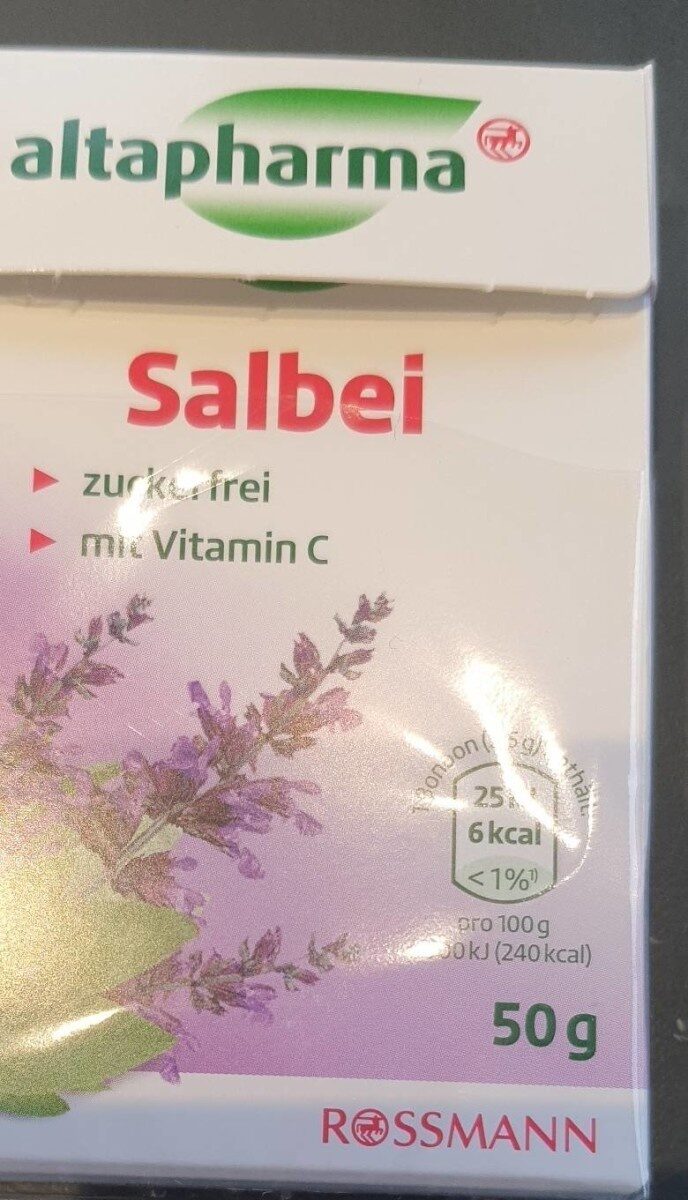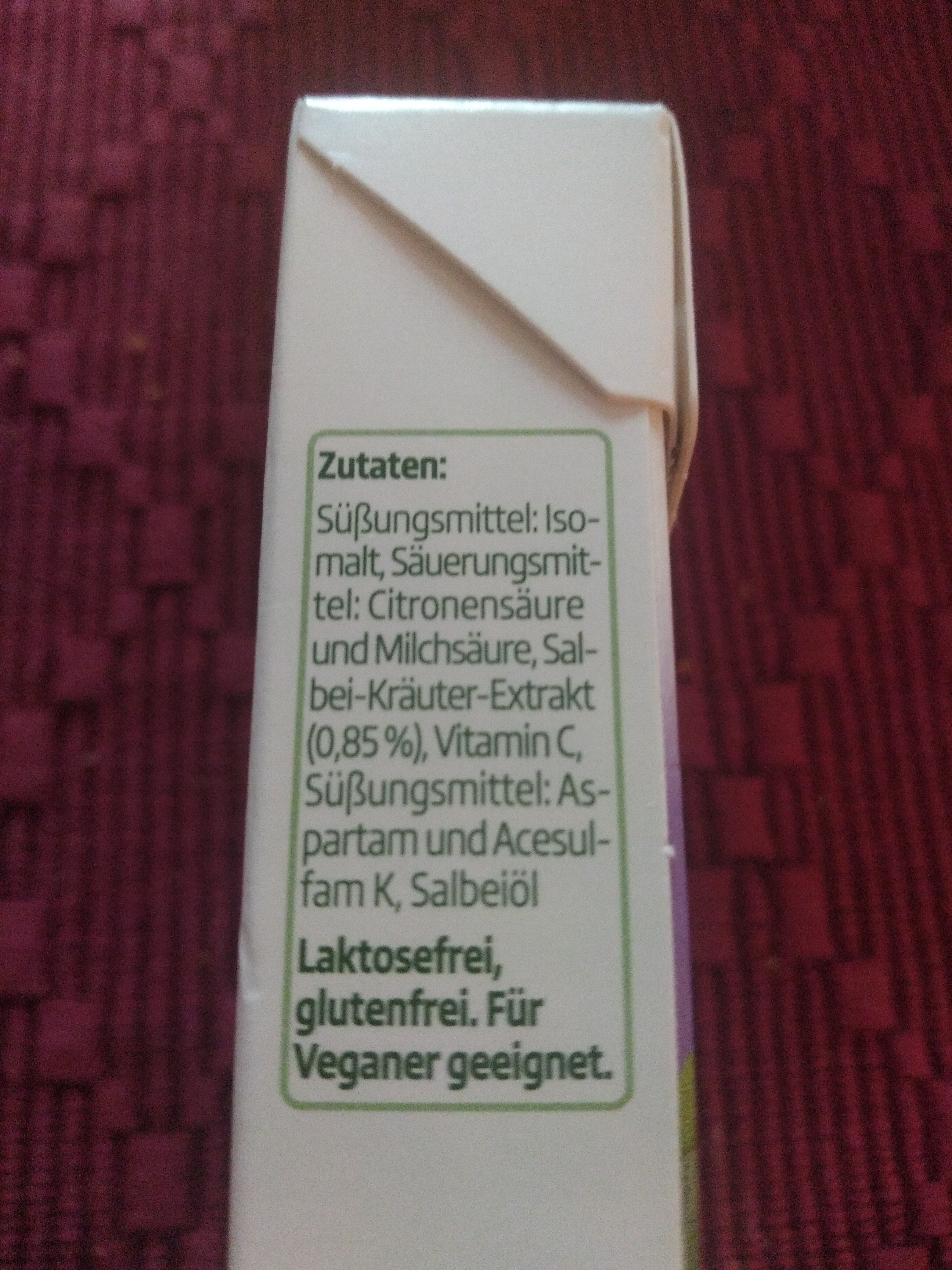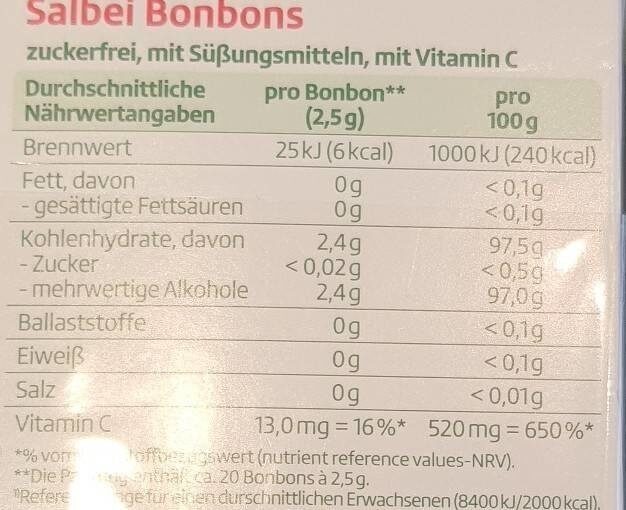Salbei - altapharma - 50 g
This product page is not complete. You can help to complete it by editing it and adding more data from the photos we have, or by taking more photos using the app for Android or iPhone/iPad. Thank you!
×
Barcode: 4305615615660 (EAN / EAN-13)
Quantity: 50 g
Packaging: Cardboard, Paperboard
Brands: Altapharma
Categories: de:Hustenbonbons
Labels, certifications, awards:
No gluten, Vegetarian, Vegan, Made in Germany, No lactose, The Vegan Society
Manufacturing or processing places: Rossmann Deutschland
Traceability code: 13419
Link to the product page on the official site of the producer: http://www.rossmann.de
Stores: Rossmann Drogerie
Countries where sold: Germany
Matching with your preferences
Environment
Packaging
Transportation
Report a problem
Data sources
Product added on by openfoodfacts-contributors
Last edit of product page on by roboto-app.
Product page also edited by annalenab-567, kiliweb, naruyoko, packbot, yuka.sY2b0xO6T85zoF3NwEKvlmpFCITi_mPBETL5nxeTwcynCZ_GR-FYyYnRPKg.









